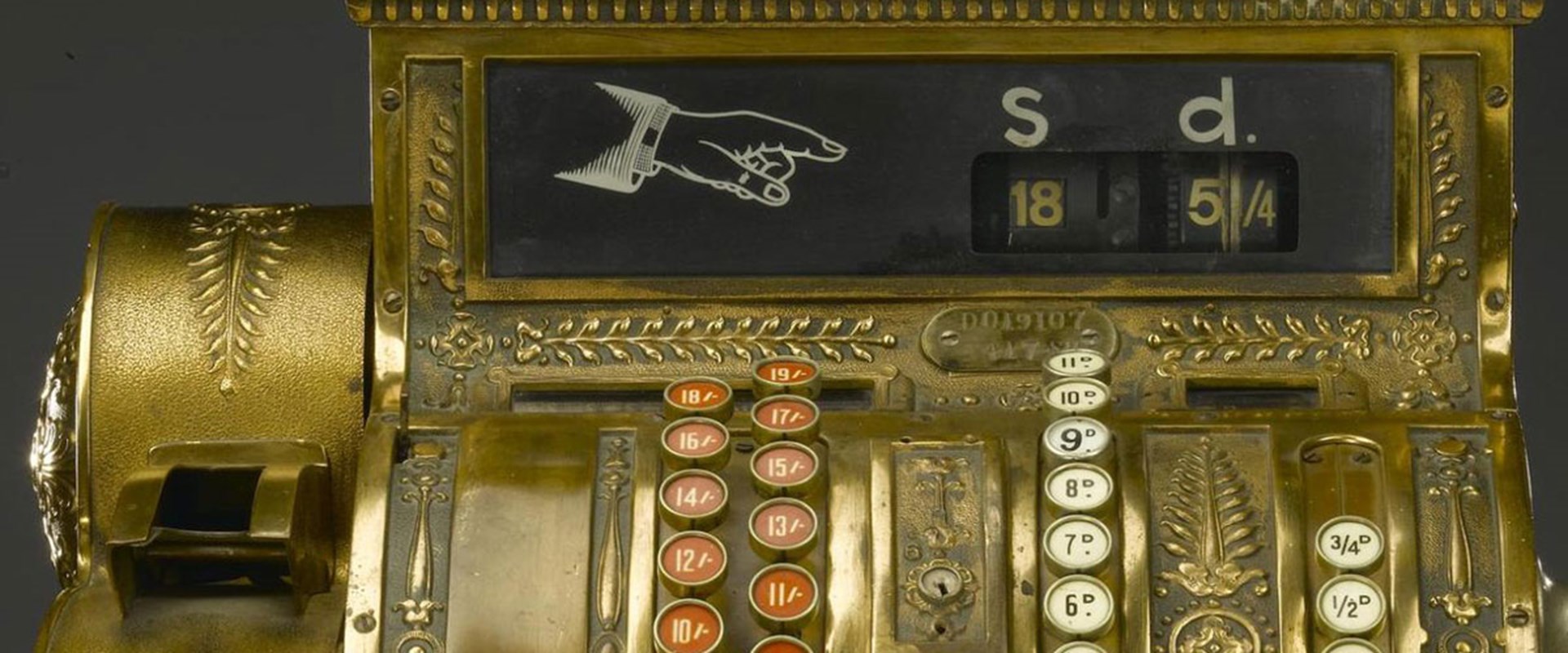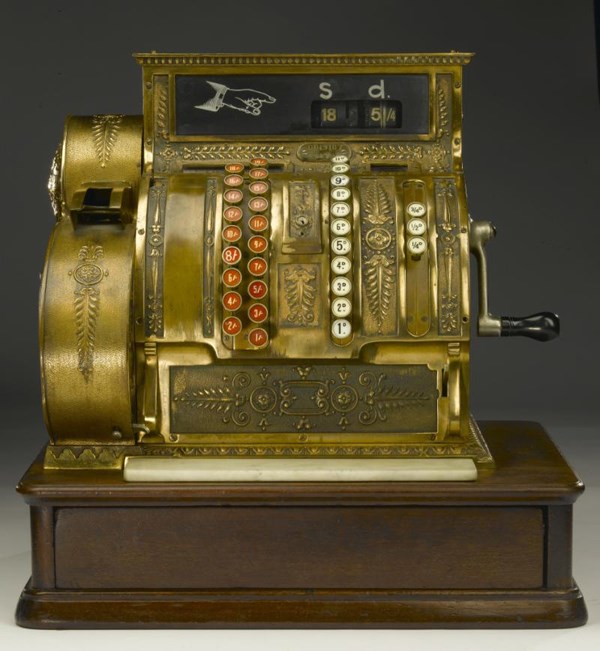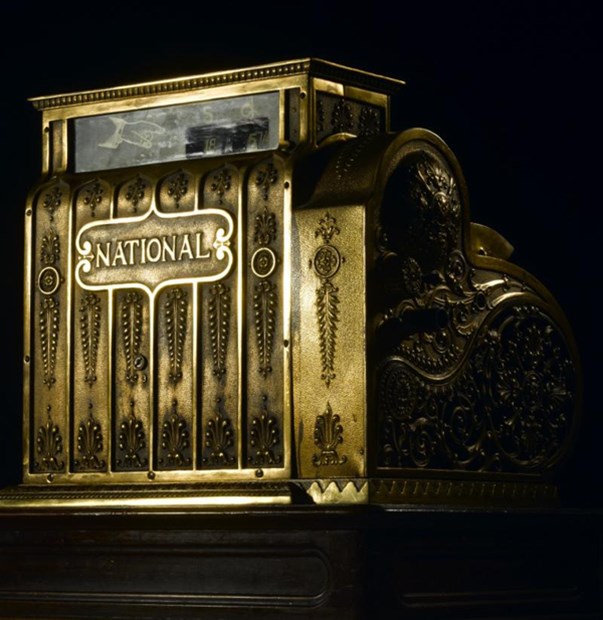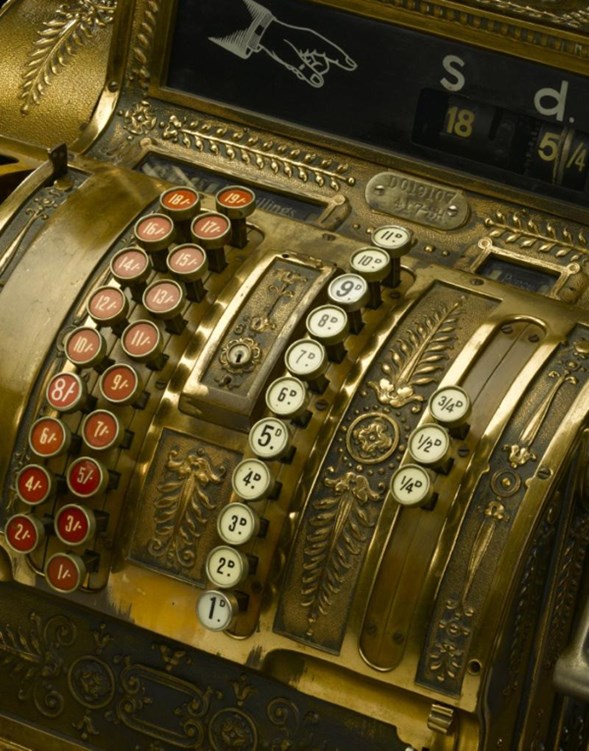Key in a search term below to search our website.
Key in a search term below to search our website.

Discover and investigate the history of the cash register, an object that has become a part of our everyday lives.
Date
c.1905
Made in
USA
Made by
The National Cash Register Co. Inc.
Made from
Figured and polished brass case mounted on mahogany
Dimensions
Height 52.1cm, width 50.8cm
Acquired
Purchased from National Cash Register Company Ltd
Museum reference
Did you know?
This cash register was powered manually using the crank handle. The electric cash register was invented a year later, 1906.

There has always been a need for counting in commerce and trade: one of the earliest tools, the abacus, is still used in parts of Asia for performing arithmetic processes. By the middle of the 19th century, however, the cash drawer with dividers to hold notes and coins had become a common feature in retail establishments around the globe.
As business volume grew in the latter part of the 19th century, there arose a need for a quick and accurate summaries of daily transactions for each point of sale and this saw the development of the cash register.

The cash register was invented in 1879 by James Ritty, a saloon keeper from Ohio, USA. He patented a machine with a mechanism similar to one he had seen count the revolutions of an ocean liner's propeller in its engine room. There was a bell to ring up sales and it also had an adder that summed all the cash values of the key presses during a day.
Ritty's invention caught the eye of John H Patterson, when he purchased several machines for use in his store. Patterson brough the rights to the patent by James and John and put it into production under the auspices of his newly formed company, National Cash Register, better now known as NCR.
From 1888 to the outbreak of the First World War, the NCR cash register, with its familiar cast-metal cases, spread into nearly every retail establishment with more than 1.5 million being sold. The typical cash register of this period was the cast brass-encased design, many of which can still be seen today. Cash registers were also made in materials other than brass, including cast-iron, wood and metal, with finishes of polished brass, nickel plate, antiqued copper, paint and silver and gold plate.

Today, cash registers can be attached to scanners, barcode scanners and credit card terminals. Increasingly, dedicated cash registers are being replaced with general purpose computers with point-of-sale (POS) software.
They are used perform a multiude of tasks which can include: scanning a barcode for each item, retrieving the price from a database, calculating deductions for items on sale, calculating the sales tax, recording the transaction in detail including each item purchased, recording the method of payment and keep totals for each product or type of product sold.